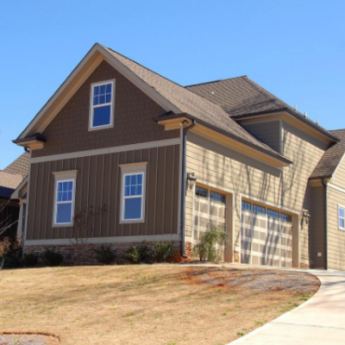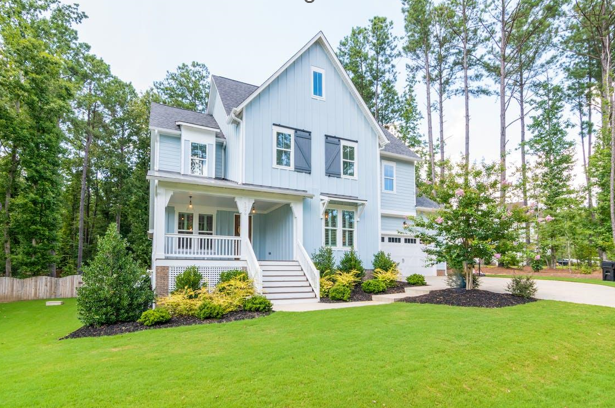Residential Vs Commercial Property – What’s The Difference?

Whether you’re a first-time investor or a seasoned pro, understanding the differences between residential and commercial real estate properties is crucial to making well-informed investment decisions.
Residential properties like single-family homes and apartment buildings cater primarily to individual tenants looking for housing, while commercial properties serve the needs of businesses through office, retail, industrial, and other spaces for lease. While both offer opportunities, there are important distinctions investors should consider.
Intended Use
The most basic difference lies in the intended use. Residential properties aim to serve as living spaces for people and families, including single-family homes, duplexes, and apartments. Commercial properties, conversely, cater to businesses like office buildings, retail shops, hotels, and warehouses. Intended use informs other variances between the property types.
Tenant Base
Residential properties are rented to individuals and families who live in the units full-time. This provides more stable, long-term tenants. Commercial properties have business tenants who typically rent the space for their operations. Commercial leases tend to be shorter-term than residential leases, providing less stability for the owner but also more flexibility to adjust lease rates. The business operations of commercial tenants range widely, from retail stores to medical offices.
Location Factors
Residential real estate location is largely driven by access to amenities for households such as schools, retail, and public transportation. Proximity to job centers is also a major factor. Commercial property location depends on access to transportation, supply chain, targeted customer base, and workforce for the business tenants. High foot traffic and visibility are priorities for retail tenants. Proximity to highways, shipping ports, and suppliers is key for industrial tenants. Check out commercial real estate Denver to find ideal commercial properties as per your needs.
Building Features
Residential properties emphasize features for household living like bedrooms, bathrooms, kitchens, and amenities such as pools or gyms. Commercial buildings prioritize features to accommodate business operations, such as HVAC systems, power supply, loading docks, and parking. Retail properties require large display windows and signage. Industrial buildings need ceiling height for racking and high-capacity utility service. The buildout and finishes are much more utilitarian than in residential.
Zoning And Building Codes
Local zoning ordinances and building codes regulate the allowed property uses and requirements in each area. Residential and commercial structures must comply with different zoning allowances and code requirements based on their intended use, from property setbacks to plumbing and electrical systems. Zoning may also regulate the types of businesses allowed in commercial districts.
Financing And Taxes
The different property uses also impact financing options and tax treatment. Residential real estate can utilize mortgages backed by government-sponsored enterprises like Fannie Mae and Freddie Mac. Commercial properties utilize commercial mortgages and loans. Commercial properties are also assessed at a higher tax rate than residential investment properties.
Expenses
Operating expenses also differ between the two property types. Residential expenses include utilities paid by the landlord, routine maintenance, and turnover costs for vacancies. Commercial properties have higher maintenance and repair costs, CAM fees if part of a larger development, insurance costs, and longer periods of vacancy typical in the market. Property taxes and mortgage payments are also higher for commercial assets.
Liquidity And Activity
The residential real estate market generally has higher liquidity and transaction activity than the commercial market. There are simply more buyers and sellers of residential properties on a regular basis. Commercial real estate is seen as more specialized, with a smaller pool of investors and financing options. This also makes values more difficult to predict.
Risk Profile
In general, residential real estate investment is considered to have less risk than commercial real estate investing. The stability of tenants, standard financing, and predictability of expenses and returns make residential more appealing to novice investors. Commercial properties have more variables like longer-term leases, higher expenses, and variable loan terms. But they can provide higher returns.
Appreciation Potential
Both property types offer appreciation potential. Limited housing supply in many markets drives residential appreciation. Commercial values are driven by factors like job and economic growth, demand for space, and replacement costs. Geographic location is key for both. Properties in top metro markets see greater value growth than secondary or tertiary markets.
To Wrap Up
While residential and commercial real estate share many qualities as investment vehicles, from tenant management to location importance, they differ significantly in their intended use, tenant base, location priorities, building features, regulations, financing, operating expenses, market activity, risk, and appreciation factors. Investors should carefully weigh these differences when determining which asset class aligns better with their investment goals, experience level, risk appetite, and target market. Analyzing one’s own criteria for a real estate purchase can lead to the ideal property type for one’s needs.
Read Also:











Leave A Reply